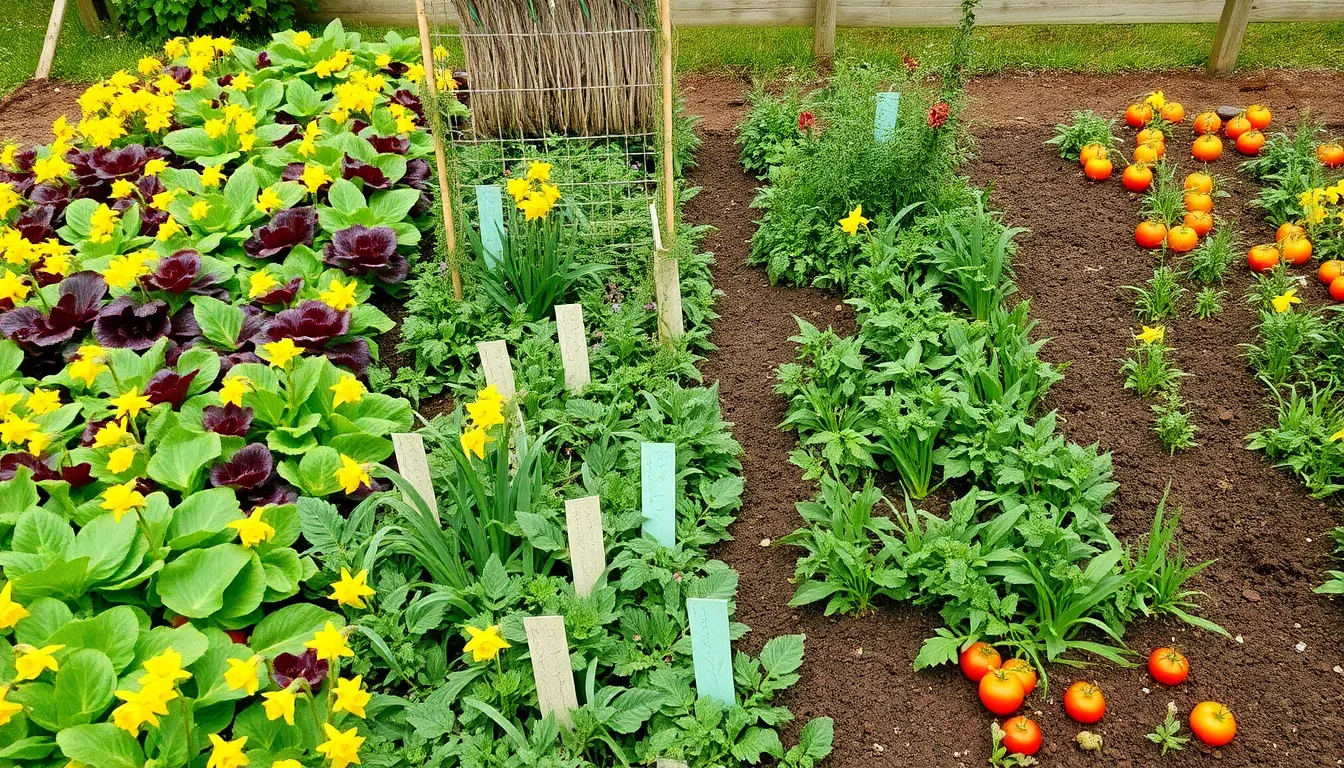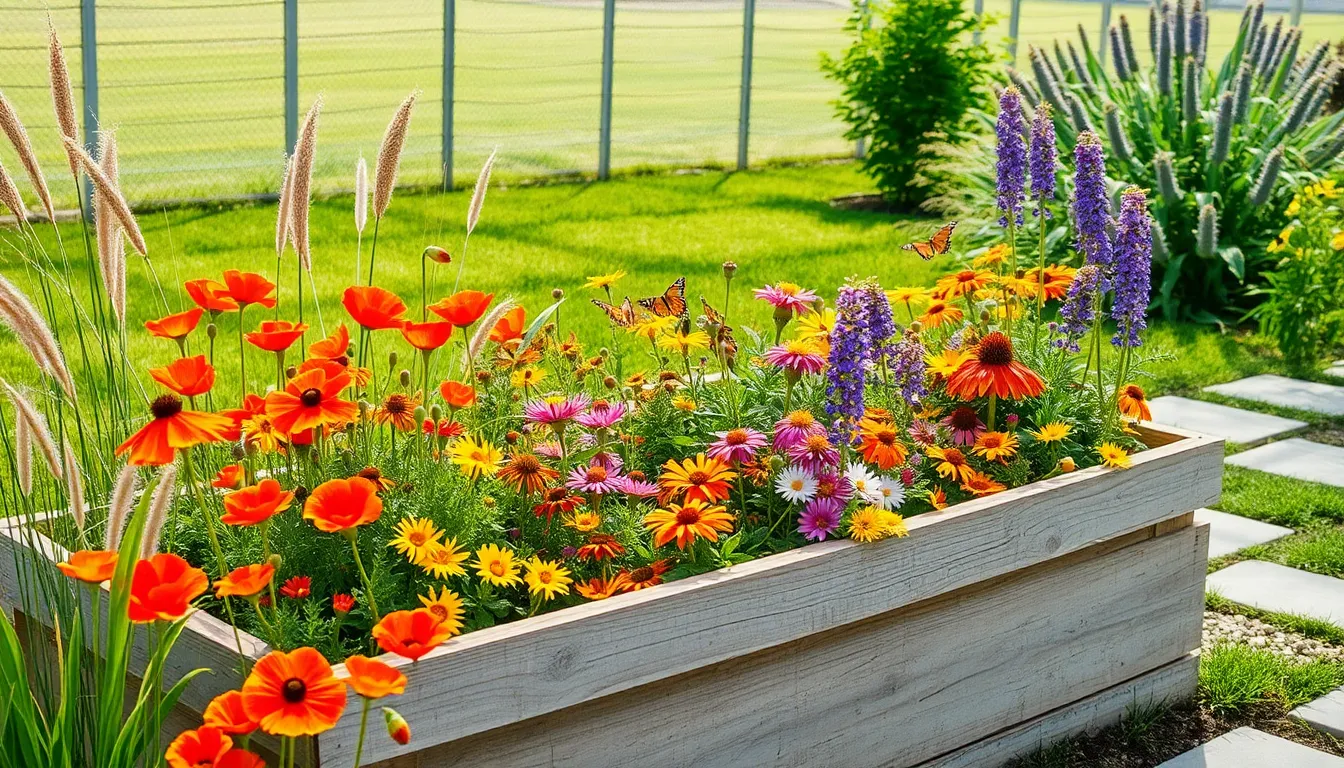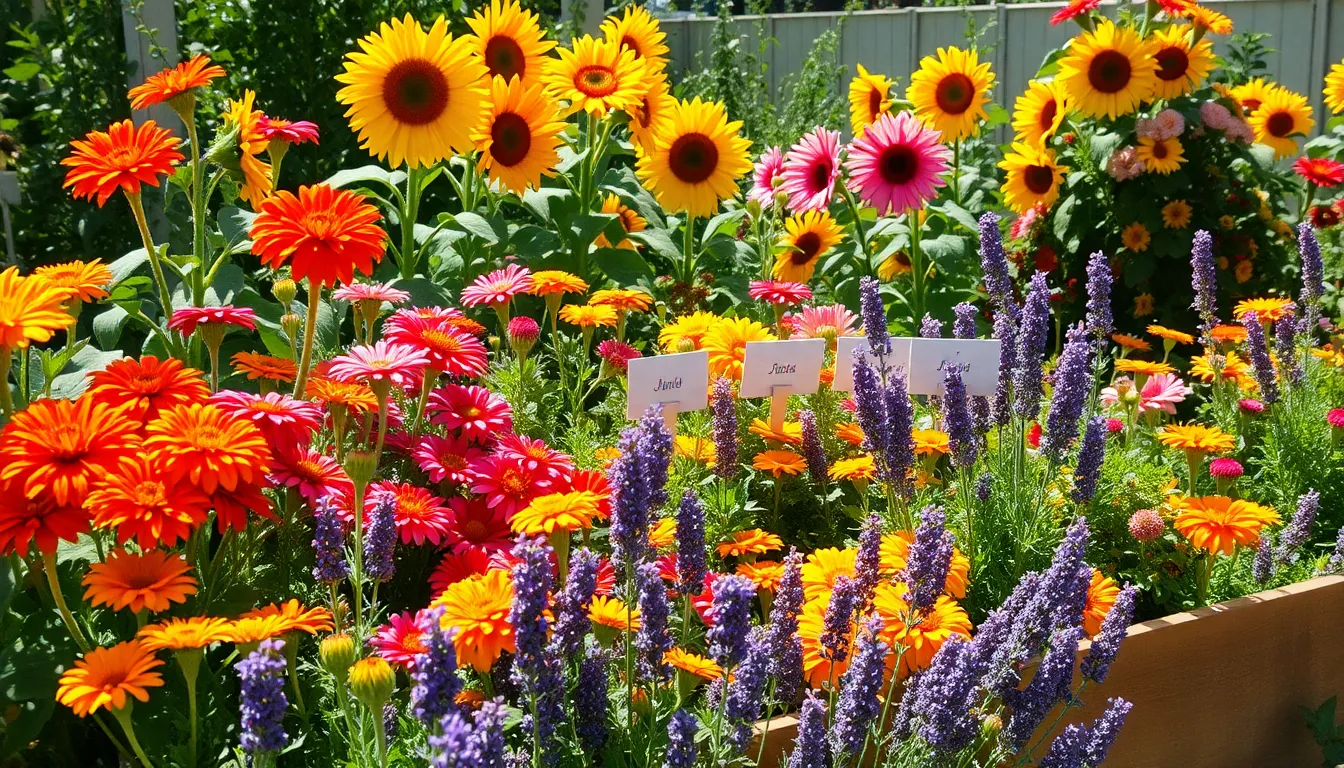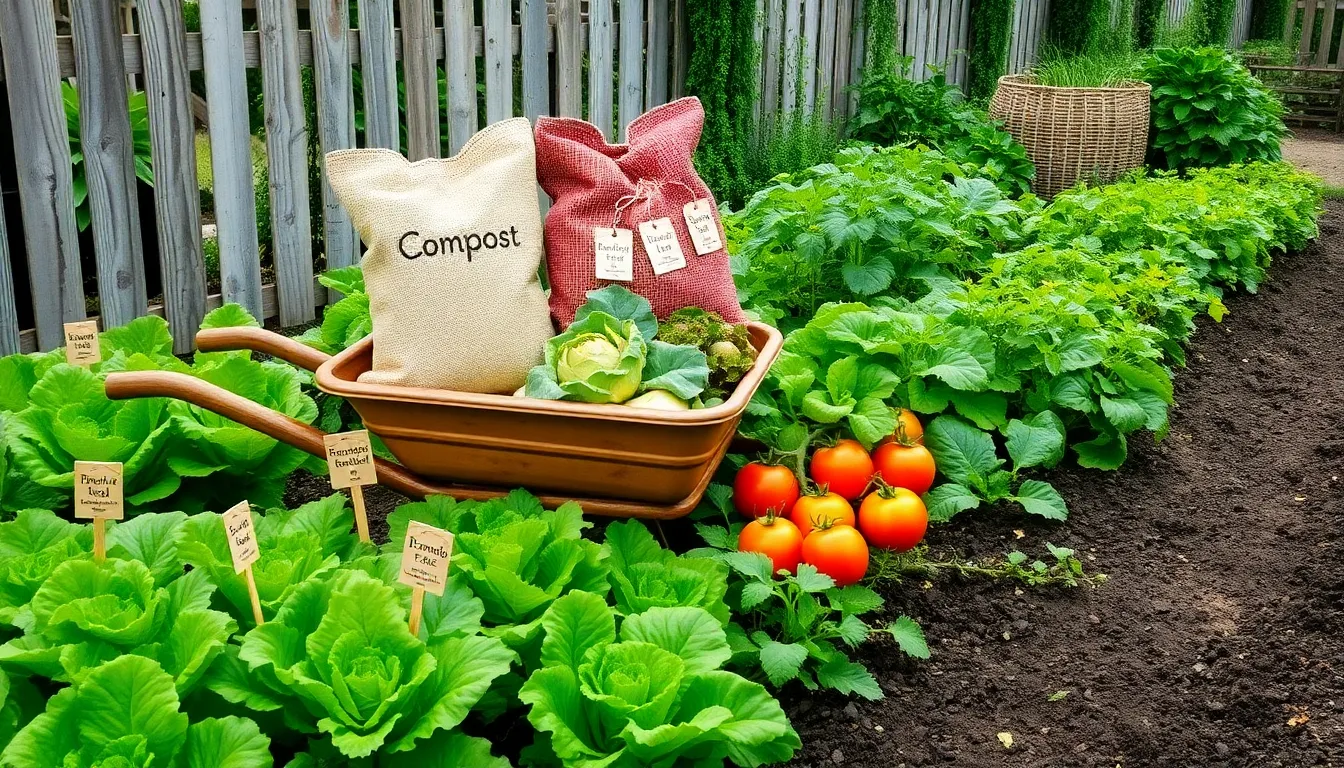Imagine stepping into your garden and being greeted by the vibrant colors and enticing aromas of fresh vegetables, each one a testament to your nurturing care. Whether you’re just starting your gardening journey or have a well-worn pair of gardening gloves, “9 Seasonal Vegetable Garden Ideas” is your go-to guide for transforming any patch of soil into a bountiful oasis. With this curated list, you’ll discover creative garden designs that not only enhance your space aesthetically but also maximize your harvest throughout the year.
In this guide, you’ll find innovative techniques that simplify the art of gardening, ensuring that each season brings its own unique rewards. From companion planting to vertical gardens, these ideas are designed to boost your confidence and arm you with the knowledge to thrive. The joy of watching your crops grow is unmatched, and with these practical strategies, you’ll reap the benefits in both flavor and fulfillment. Let’s embrace the seasons and get our hands dirty, cultivating not just vegetables, but also a deeper connection to the earth and its timeless rhythms.
Rotate Crops to Prevent Disease
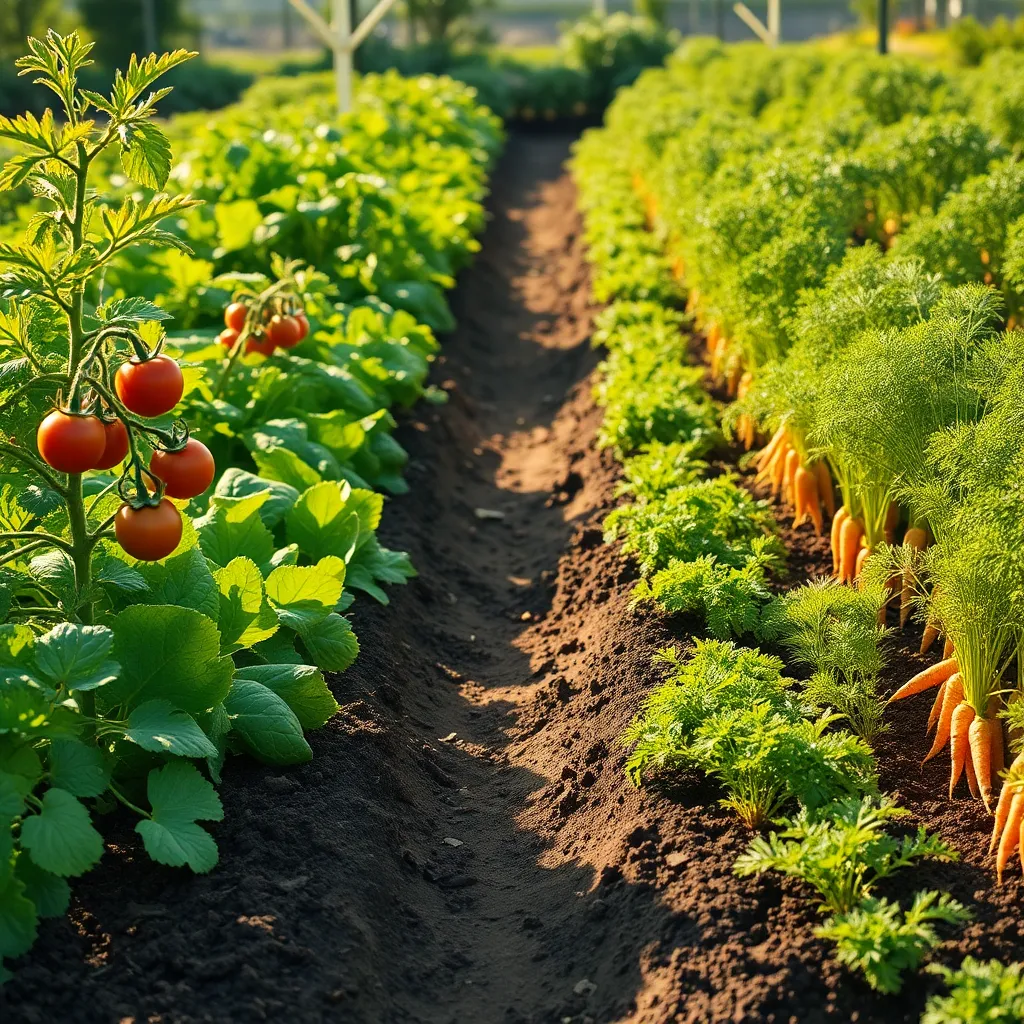
Rotating crops is a time-tested strategy to prevent disease and improve soil health in your vegetable garden. By changing the planting location of your vegetables each year, you can disrupt the life cycles of pests and diseases, making it harder for them to establish.
Start by grouping your plants into families, such as tomatoes and peppers in the nightshade family, and rotate them with unrelated families. This practice minimizes the chance of soil-borne diseases persisting in your garden bed from one season to the next.
Ensure that you rotate your crops every year, ideally following a three- or four-year cycle. For example, follow tomatoes with beans, then carrots, and finally brassicas like cabbage or broccoli.
Advanced gardeners can take this a step further by incorporating cover crops like clover or rye during the off-season. Cover crops improve soil structure, fix nitrogen, and further reduce disease pressure by keeping the soil active and healthy.
Remember to prepare your soil adequately before planting each new crop. Adding organic matter, such as compost, will replenish nutrients and improve soil texture, making it more conducive to healthy plant growth.
Plant Cold-Hardy Vegetables Early

As the cold season approaches, it’s time to focus on planting cold-hardy vegetables. These resilient plants can thrive in cooler temperatures, making them ideal for early planting in your garden.
Start by selecting vegetables like kale, spinach, and peas, which not only tolerate cold but also improve in flavor after a frost. For beginners, choosing seeds or seedlings labeled as frost-tolerant ensures a successful start.
Prepare your soil by adding organic matter such as compost, which enhances drainage and provides essential nutrients. Cold-hardy vegetables prefer well-draining soil to prevent waterlogged roots, especially during early spring rains.
To maximize growth, plant seeds at the recommended depth and space them according to the instructions on the packet. Water them consistently, making sure the soil remains moist but not saturated, which is crucial for the health of these robust plants.
For those looking to extend their growing season, consider using row covers or cold frames to protect your crops from unexpected frosts. These simple tools can provide an additional layer of warmth, effectively turning your garden into a mini greenhouse.
Use Mulch to Retain Moisture
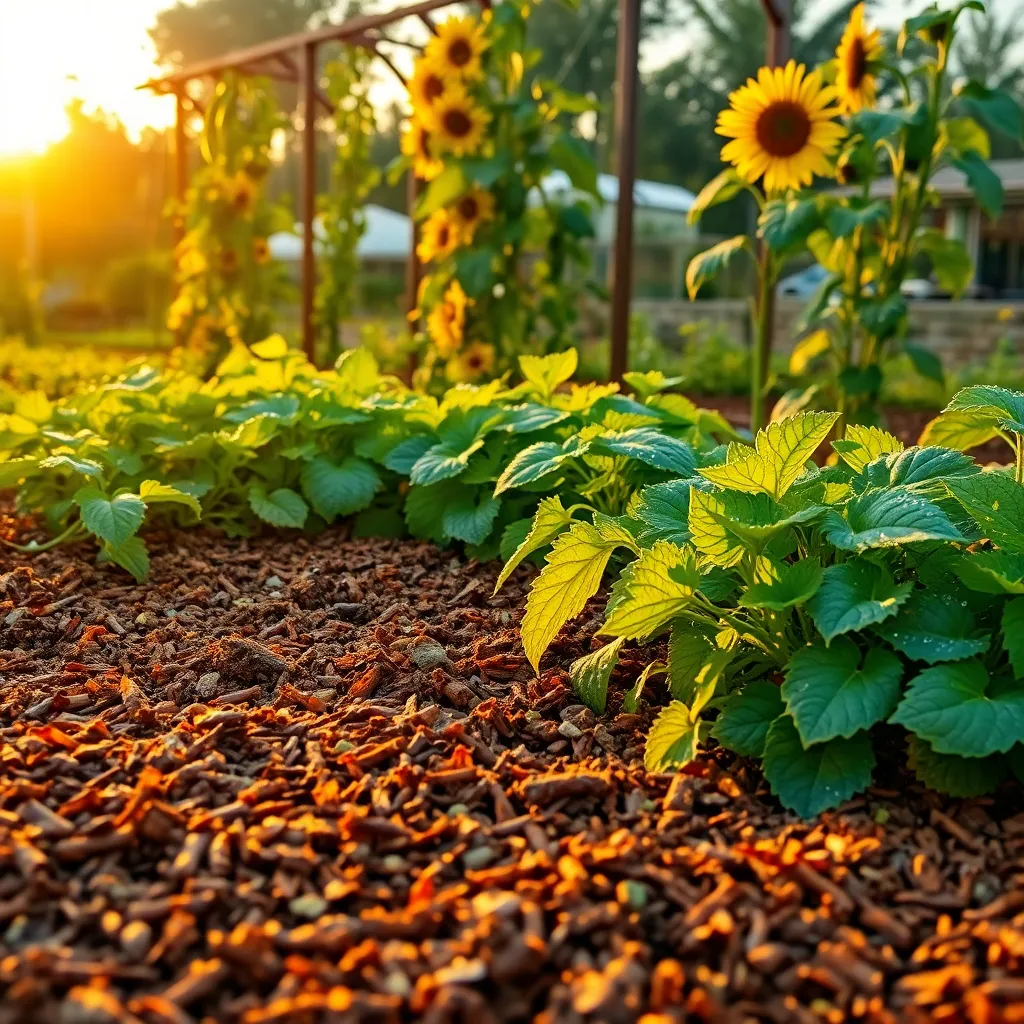
Mulch is a powerful tool in the gardener’s arsenal, helping to retain moisture in the soil, which is crucial for healthy vegetable growth. By applying a 2-3 inch layer of organic mulch, such as straw or shredded leaves, you can significantly reduce the need for frequent watering.
In addition to moisture retention, mulch also helps regulate soil temperature, keeping it cooler in the summer and warmer in the winter. This is particularly beneficial for root systems, as it creates a stable environment that encourages robust growth.
For beginners, start with an easy-to-find mulch like straw or bark chips, which both break down slowly and enrich the soil over time. Ensure the mulch is spread evenly and not piled against the stems of your plants, which can lead to rot.
Advanced gardeners might consider using specialized mulches like cocoa hulls or pine needles, which can add specific nutrients to the soil or alter its pH slightly. Regularly check the mulch layer and replenish it as it decomposes to maintain its effectiveness throughout the growing season.
Sow Fast-Growing Greens in Fall
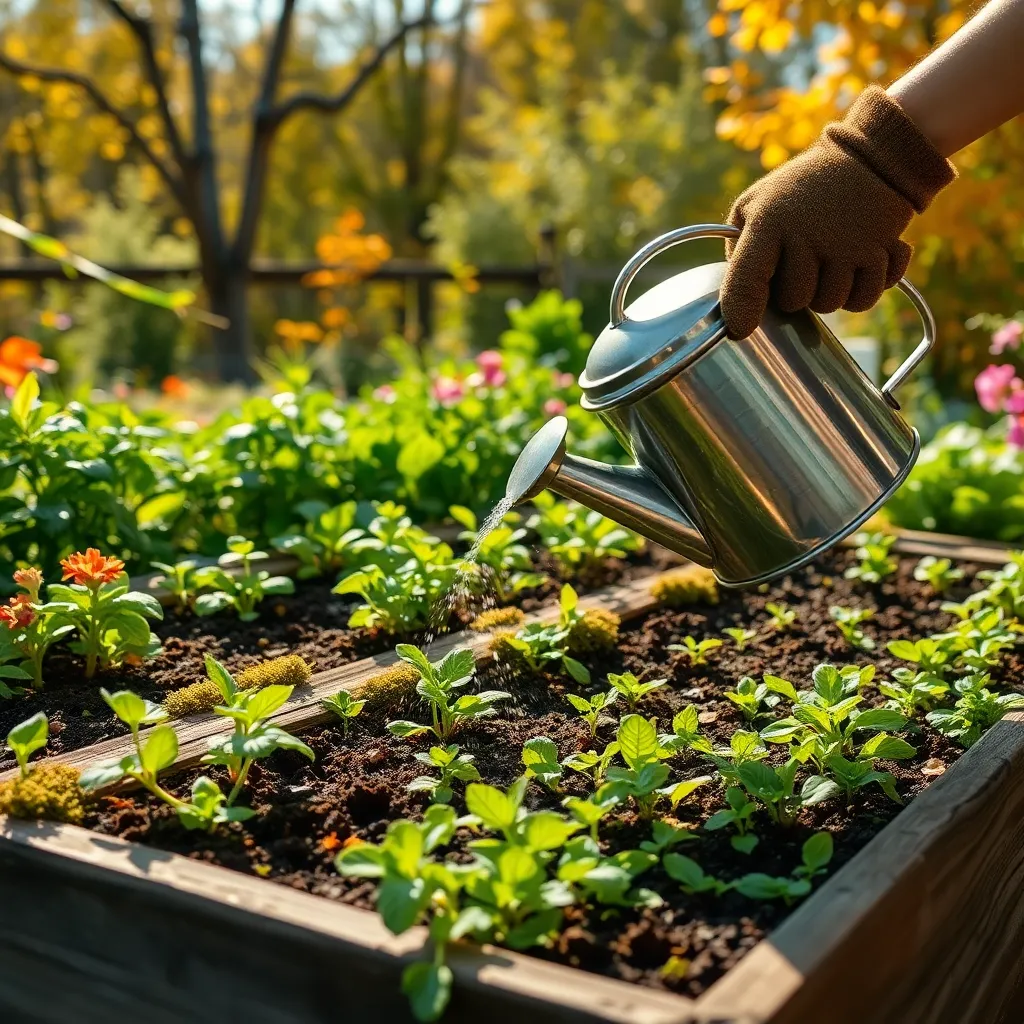
Fall is an excellent time to sow fast-growing greens, taking advantage of the cooler temperatures and often more frequent rains. Leafy greens like arugula, spinach, and kale thrive in the shorter days of autumn and can be harvested within just a few weeks.
Begin by selecting a spot in your garden that receives at least 4-6 hours of sunlight per day. Prepare the soil by incorporating organic matter such as compost to enhance fertility and ensure good drainage.
When sowing seeds, plant them about 1/4 inch deep and cover lightly with soil. Keep the soil consistently moist; a light watering once a day can help seeds germinate quickly and establish healthy roots.
Consider succession planting for an extended harvest, sowing seeds every two weeks. This method ensures a continuous supply of greens until the first hard frost, allowing you to enjoy fresh produce late into the season.
Protect Plants with Row Covers
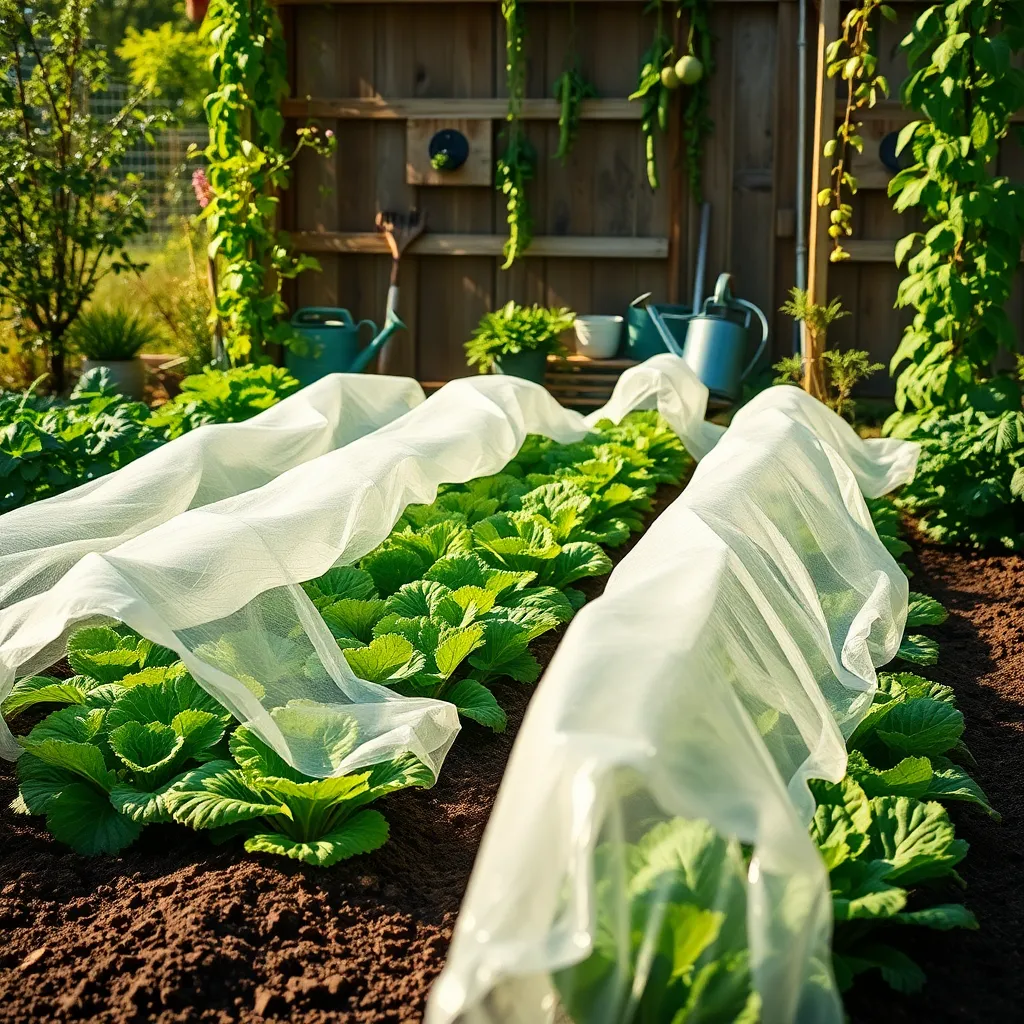
Row covers are an excellent way to protect your plants from the elements and extend your growing season. They act as a barrier against frost, pests, and even heavy rain, making them a versatile addition to any garden.
To install row covers, simply drape them over your plants and secure the edges with soil or garden staples. This creates a microclimate that can raise the temperature around your plants by several degrees, which is especially beneficial in cooler weather.
While row covers are beneficial, it’s important to monitor the temperature underneath them. During sunny days, the temperature can rise quickly, so be prepared to ventilate by lifting the covers or using hoops for support to prevent overheating.
For beginners, lightweight floating row covers are easy to use and provide ample protection for most vegetables, like lettuce and spinach. Experienced gardeners might experiment with heavier covers during winter to keep hardy greens like kale thriving.
When watering plants under row covers, ensure that moisture reaches the roots by using a soaker hose or drip irrigation. This method conserves water and maintains consistent soil moisture, which is crucial for plant health.
Start Seeds Indoors for Spring
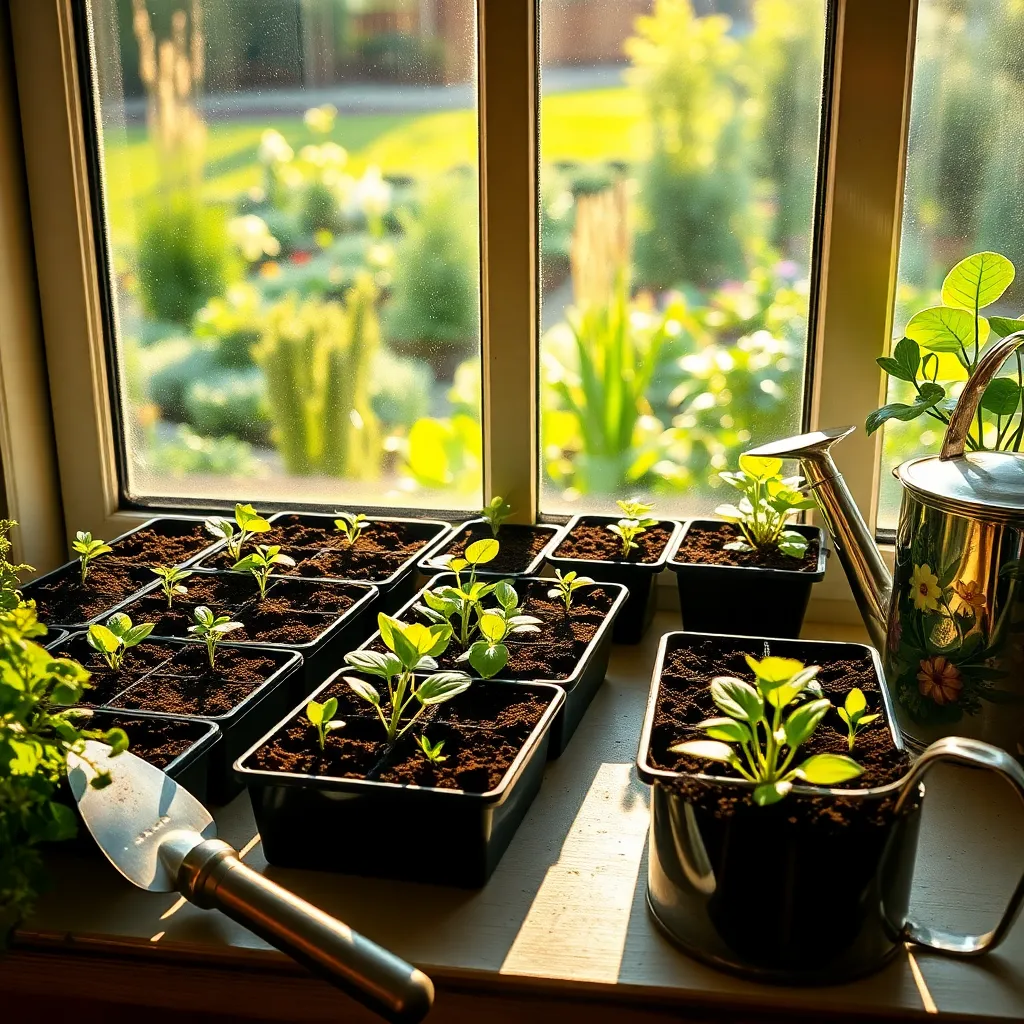
Starting seeds indoors is an excellent way to get a head start on your spring garden. This method allows you to control the growing conditions, giving your plants a better chance to thrive once transplanted outside.
Choose the right containers for your seeds, such as seed trays or small pots, which provide adequate drainage and space for root growth. Use a quality seed-starting mix rather than garden soil, as it is lighter and ensures better aeration and moisture retention.
Place your seed containers in a warm location with plenty of light, ideally near a south-facing window or under grow lights. Keep the soil consistently moist but not soggy, watering gently to avoid disturbing the seeds.
As seedlings grow, thin them to prevent overcrowding, which can lead to weak and spindly plants. Once they develop their first true leaves, consider adding a diluted liquid fertilizer to support their growth.
Before transplanting outdoors, gradually acclimate your seedlings by hardening them off over a week. Gradually increase their exposure to outdoor conditions, starting with a few hours of sunlight and wind each day.
Harvest Regularly to Promote Growth
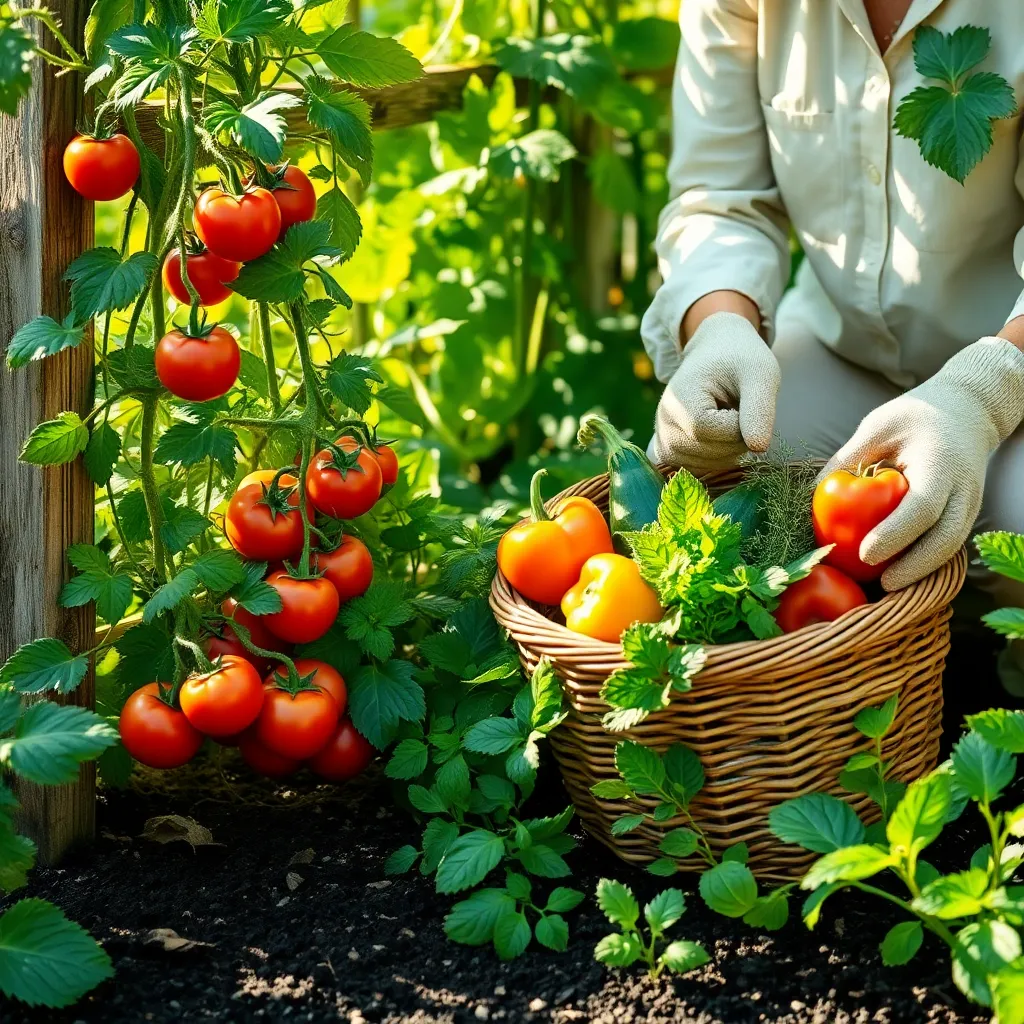
Regular harvesting is essential for promoting continued growth in your vegetable garden. By removing mature produce, you not only enjoy fresh vegetables but also encourage plants to keep producing new fruits or leaves.
For leafy greens like lettuce and spinach, practice “cut and come again” methods. This involves cutting the outer leaves and allowing the center to keep growing, ensuring a continuous supply throughout the season.
When it comes to fruiting plants like tomatoes or zucchinis, pick them as soon as they reach maturity. Leaving mature fruits on the plant can signal the plant to slow down production, so timely picking is crucial.
Advanced gardeners might explore succession planting to maximize yield. After harvesting a crop, quickly prepare the soil with compost and plant a new set of seeds or seedlings to maintain productivity.
Ensure your plants are well-watered and fed after each harvest. This supports their recovery and boosts their ability to produce more. Aim for consistent moisture in the soil, especially during peak growing periods, to maintain plant health.
Consider using a balanced, organic fertilizer to replenish nutrients after harvesting. Fertilizing after each harvest can give your plants the necessary boost for continued growth and help maintain soil fertility.
Keep an eye on pest and disease management as well, especially after harvesting. Removing dead leaves and debris can prevent pest infestations and diseases, keeping your plants healthy and productive.
Amend Soil with Seasonal Compost
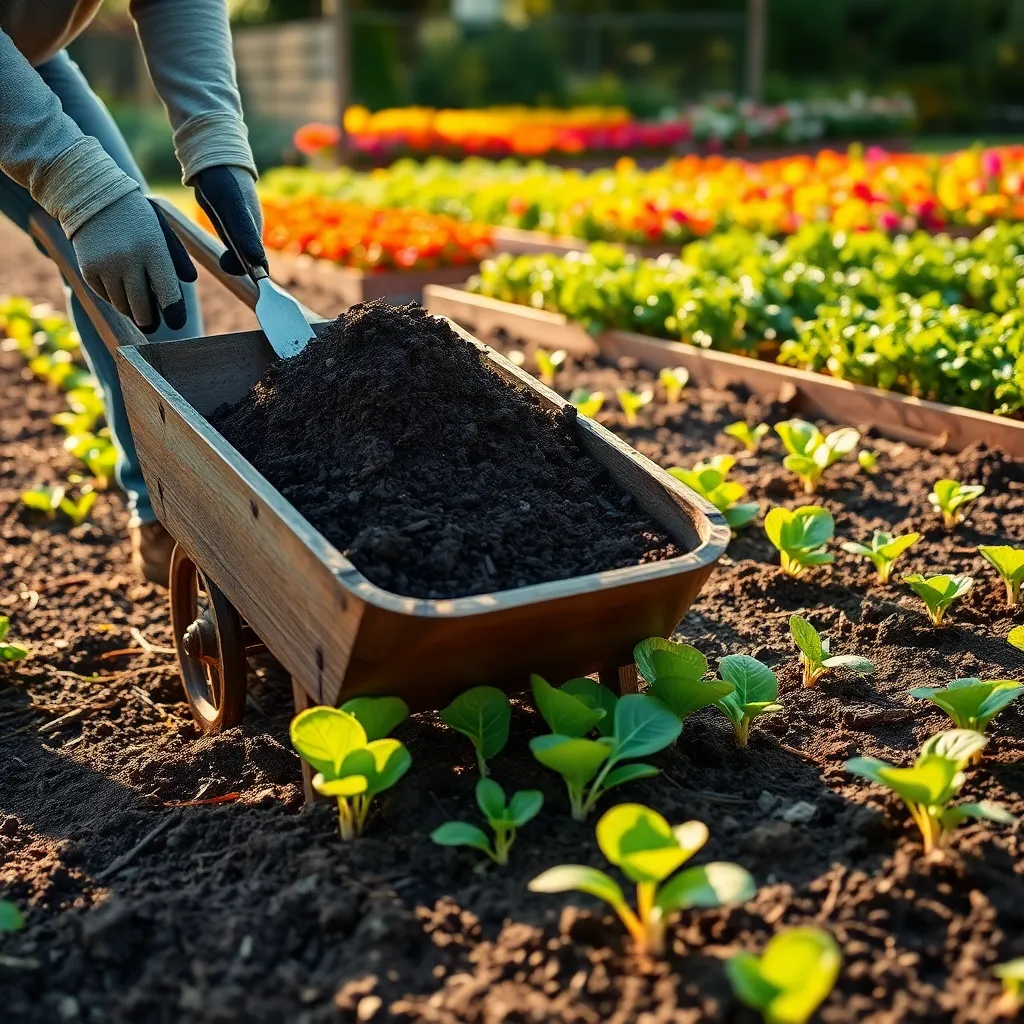
Composting is a sustainable way to enrich your soil with essential nutrients. Amending your soil with seasonal compost not only improves its structure but also enhances water retention and drainage.
To start, collect kitchen scraps and yard waste to create your compost pile. Keep a balance of green materials, like vegetable peels, and brown materials, such as dried leaves, to ensure a healthy decomposition process.
Once your compost is ready, spread a 2-3 inch layer over your garden beds and mix it into the topsoil. This step is crucial in preparing your soil for the upcoming planting season, providing plants with a nutrient-rich environment.
For more experienced gardeners, consider testing your soil’s pH before adding compost. This will help you adjust the compost composition to better meet your plants’ specific needs, maximizing their growth potential.
Choose Varieties for Each Season
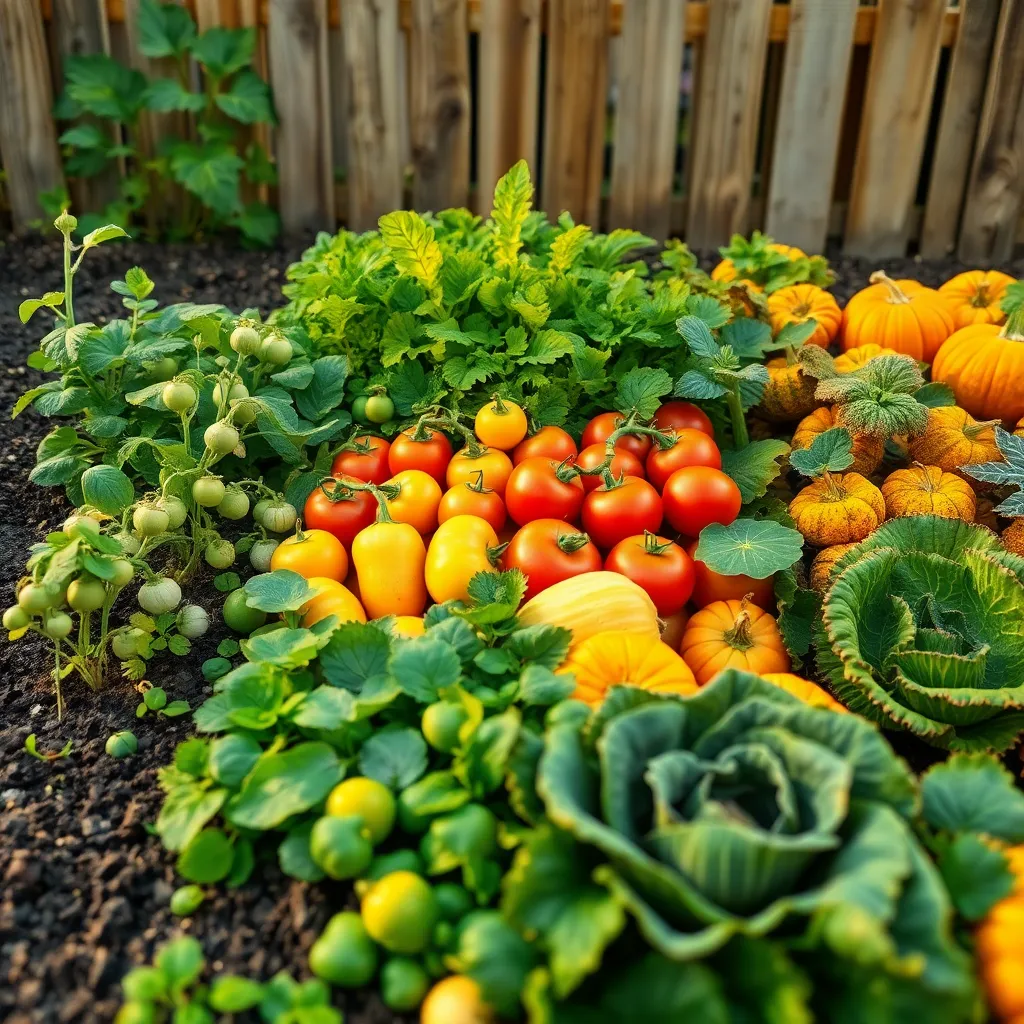
Choosing the right varieties for each season is crucial to maximizing your garden’s productivity. Begin by selecting seeds or plants that are suited to your local climate and specific growing season. In spring, opt for cool-season crops like lettuce, peas, and radishes, which thrive in the cool, moist soil. These varieties germinate quickly and can be planted as soon as the ground is workable.
When summer approaches, transition to warm-season crops such as tomatoes, peppers, and cucumbers. These plants require longer daylight hours and warmer soil temperatures to flourish. Ensure they have well-draining soil enriched with compost and a consistent watering schedule to support their growth. For autumn, choose fast-growing varieties like spinach, kale, and broccoli, which can withstand cooler temperatures and shorter days. These crops benefit from a layer of mulch to maintain soil warmth and moisture.
Winter gardening is possible in milder climates with the right selection of frost-tolerant plants like garlic, carrots, and Brussels sprouts. Use cold frames or row covers to protect these crops from extreme weather and extend their growing season. Advanced gardeners might experiment with succession planting to continuously harvest throughout the year. This technique involves sowing seeds at intervals to keep a steady supply of fresh produce.
Remember, rotating your crops each season helps prevent soil depletion and pest buildup. Consider creating a garden plan to track what you plant and where, ensuring a balanced and healthy garden ecosystem. Taking the time to choose the right varieties for each season will not only boost your yield but also enhance your gardening experience.
Conclusion: Growing Success with These Plants
As you explore the enriching journey of cultivating a seasonal vegetable garden, consider the nine key relationship concepts that mirror this nurturing process: understanding your partner’s needs, adapting to change, planting seeds of trust, tending to communication, weeding out negativity, embracing growth, celebrating small wins, harvesting the fruits of your efforts, and planning for the future. Each of these principles serves as a reminder that relationships, much like gardens, thrive when given consistent care and attention.
To put these ideas into practice, start with one actionable step today: initiate a heartfelt conversation with your partner about a shared goal or interest. This simple act can sow the seeds of deeper connection and mutual understanding.
Remember, just as your garden needs regular tending, so do your relationships. Bookmark this article to revisit these insights and continue cultivating a fulfilling partnership.
Looking ahead, know that by investing time and energy into these nurturing practices, you are laying the foundation for a thriving, resilient relationship. Embrace the journey, and let your connection flourish in every season.

